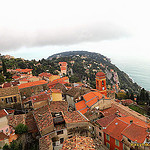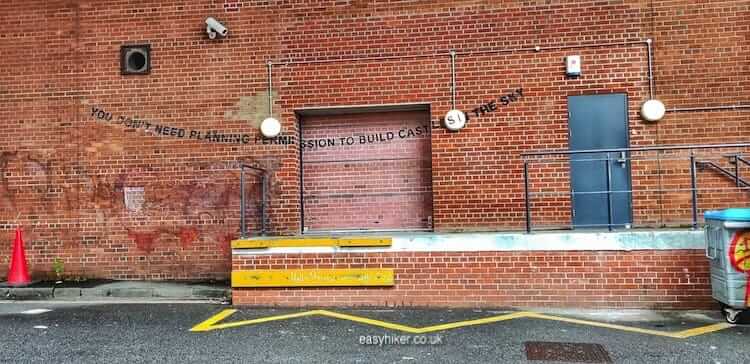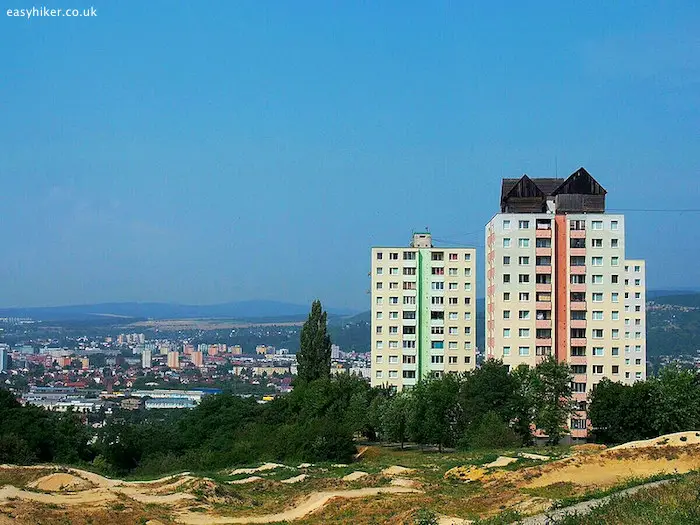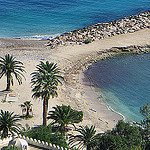Themed Walks in Paris
Walking in Montmarte by Chansons
It seems to be more difficult to say goodbye to Paris than originally thought.
This is a postscript to last week’s post. A postscript appears in order because more songs have been written about Montmartre than about any other part of Paris, and rather than leaving out all but one or two of them (in order to preserve some sort of balance,) it appeared the better choice to dedicate an entire post to Montmartre by chansons, singing about the streets, the charms and the legends of La Butte (which is how Parisians call the “mountain of martyrs” on the northern outskirts of the town centre.)
We start our little Montmartre by Chansons walk in the Pigalle quarter, Montmartre’s shabby neighbour to the south. Maurice Chevalier takes us for a walk around Place Pigalle …
… where you can find “un petit jet d´eau / une station de métro / entourée de bistros” ( a small fountain and an underground station surrounded by bistros), but also “gypsy women who want to read your hands”, homeless folks (“clochards”) and, of course, “girls who smile at you and tell you to come with them, discreetly supervised by their man in dark corner”. (Scenes like those – much rarer today than in the 1950s – are what gave Pigalle its dodgy reputation. US soldiers, on recreational leave in Paris during WWII, dubbed it “Pig Alley”.)
We continue our walk down Boulevard Rochechouart, the frontier between Montmartre and Pigalle as well as the borderland where the two – one petit bourgeois and bohemian, the other base and bawdy – have mingled ever since. It is also in this borderland where you would have found the area’s most famous bars and nightclubs such as the Moulin Rouge …
… and the equally legendary Chat Noir, made famous by the cabaret singer Aristide Bruant, the guy in the red scarf from the Toulouse Lautrec poster (yes, that one) . In this clip of his most famous song, recorded probably around 1920, it is Bruant’s own voice that you are hearing. (He died in 1925.)
In the song, Bruant meets several people in the streets – a friend, a streetwalker, inquisitive policemen – who all want to know what he’s up to, and his answer is always the same:
“ Je cherche fortune / autour du Chat Noir / au clair de la lune / à Montmartre le soir.“ (I am taking my chances around the Chat Noir, in the moonlight of Montmartre after dark.”)
The Chat Noir was originally established (in 1881) on 84 Boulevard Rochechouart, today a souvenir shop. (The modern Chat Noir a couple of blocks to the west on Boulevard Clichy is just trying to capitalize on a famous name.)
Bruant became famous here, but left the place soon after and bought a few clubs of his own over the years, some in the Montmartre area and others elsewhere. (Les Ambassadeurs, “his cabaret” on the Lautrec poster, refers to an upscale joint on the Champs Elysees.)
Over the years, Bruant became a well-known and respected citizen who also deserves to be remembered for being the first popular artist to acquire total control over his image: he sued a singer who had imitated his style – and won, which made Bruant the first creative artist to effectively copyright a style rather than any specific material.
Now we turn right and uphill to climb La Butte herself. As the song has it: “the stairways are hard to climb”, but the prize is worth the effort because “the blades of the windmills are protecting the lovers”. It is sung here by Cora Vaucaire. You may want to join in for the chorus: “Les escaliers de la butte / sont durs aux miséreux / les ailes du Moulin / protègent les amoureux.”
La Complainte de la Butte is probably the most famous of all songs about Montmartre. Both the lyrics and the music were written by the director Jean Renoir – who, incidentally, grew up here (as the son of the painter Auguste Renoir) – for his 1955 film French Cancan.
This is the scene from the film itself. It features the actress Anna Amendola, but what you hear is the voice of the singer Cora Vaucaire. (This is how they shot movies back then.)
If you don’t like stairs: there is a way of avoiding them, because you can also climb La Butte on the ancient Rue Lepic, which was built in a sloping angle that was just obtuse enough for horses to pull carriages on top of the hill. (Which is why the street runs in a serpentine.)
The song Rue Lepic starts by describing the colourful market of the street’s lower section – which was also used as a setting for the movie Amelie almost 100 years later: the prettier things are, the more slowly they change in Paris – before concluding “Et la rue / monte, monte toujours / vers Montmartre là-haut / vers ses moulins si beaux / ses moulins tout là-haut.” (The street rises and rises towards Montmartre and its pretty windmills right on top.)
(The version of the much-covered song that has been used for this video is sung by Henriette Ragon, better known under her stage name Patachou, after the famous restaurant on Montmartre’s artists’ square, aka the Place du Tertre, where she first appeared on a stage when she was running the place together with her husband in the late 1940s.
Today, Mme Patachou is 95 years old. Until a few years ago, she still gave the occasional appearance on French TV, sometimes in a wheelchair.)
When you have reached the second of Montmartre’s two remaining windmills – both on your left hand side – you are actually not yet quite at the top, but very nearly. Turn left now into Rue Girardon, right again into Rue de l’Abreuvoir at the bottom and then left into Rue des Saules.
At the corner of the vineyard and the cabaret Lapin Agile (also owned and run by Bruant at one stage), you will find Rue St Vincent, where our walk terminates – with a story of an “innocent looking girl” who meets a sticky end.
This rather grim ballad, alternately known as Rose Blanche, mentions quite a few places and sites of Montmartre: the Rue des Saules (the same street you have just walked down: this is the route of “Rose Blanche” on her way home – from the Pigalle area, presumably), “la basilique” (Sacre Coeur, the cross on top of which Rose sees while streetwalking –and that you can also spot from here on your right hand side) and the “old cemetery” (just on the other side of the wall before you) in whose shadow she lives and where she is finally laid to rest, having been knifed by her jealous boyfriend.
There are many different versions of this song, but I like this one best, sung by a largely forgotten French singer from the 1950s called Valerie Francoise.
I finished last week’s post with a “least favourite” (John Peel’s, all songs, all time), and would like to do the same today with another one (my own, songs about Paris, songs that I have come across during my research for this post). Montmartre by Chansons.
The song is called Paris Paris (so good they named it twice) and features the unlikely pairing of Malcom McLaren and Catherine Deneuve, one of whom cannot sing and one of whom does not even try.
One could argue that the song does not belong in this post because its not about Montmartre, but please note that it does give a name check to the Sacre Coeur and that it features the line “let’s drink near the Bateau Lavoir”.
Perhaps everyone involved had one too many before they recorded this. That would certainly explain a lot.
(One word of warning: the video gets a bit steamy a couple of times, although not between Ms Deneuve and Mr McLaren who … well, let’s just say, keep a respectful distance from one another at all times.)
If ever I become homesick, this is the video I shall be watching.






